Pipeline, sliding windows, artificial data synthesis, and ceiling analysis.
Photo OCR
I would like to give full credits to the respective authors as these are my personal python notebooks taken from deep learning courses from Andrew Ng, Data School and Udemy :) This is a simple python notebook hosted generously through Github Pages that is on my main personal notes repository on https://github.com/ritchieng/ritchieng.github.io. They are meant for my personal review but I have open-source my repository of personal notes as a lot of people found it useful.
Problem Description and Pipeline
- Photo OCR (Optical Character Recognition) Problem
- Given picture, detect location of text in the picture
- Read text at that location
- Photo OCR Pipeline
- Text detection
- Character segmentation
- Splitting “ADD” for example
- Character classification
- First character “A”, second “D”, and so on

- First character “A”, second “D”, and so on
- When you design a machine learning algorithm, one of the most important steps is defining the pipeline
- A sequence of steps or components for the algorithms
- Each step/module can be worked on by different groups to split the workload
Sliding Windows
- In order to detect things in images we can use an example of pedestrian detection
- We can identify the pedestrians easily because the aspect ratio of most pedestrians are similar

- We can identify the pedestrians easily because the aspect ratio of most pedestrians are similar
- Supervised learning for pedestrian detection
- x = pixels in 82 x 36 image patches
- We can train a neural network to classify image patch as either containing a pedestrian or not

- Sliding window detection
- We slide a green box (82 x 36) with a defined step-size/stride
- We continue sliding the window over the whole image
- We can take a large box and resize to 82 x 36
- That’s how we train we train a supervised learning classifier to identify pedestrians
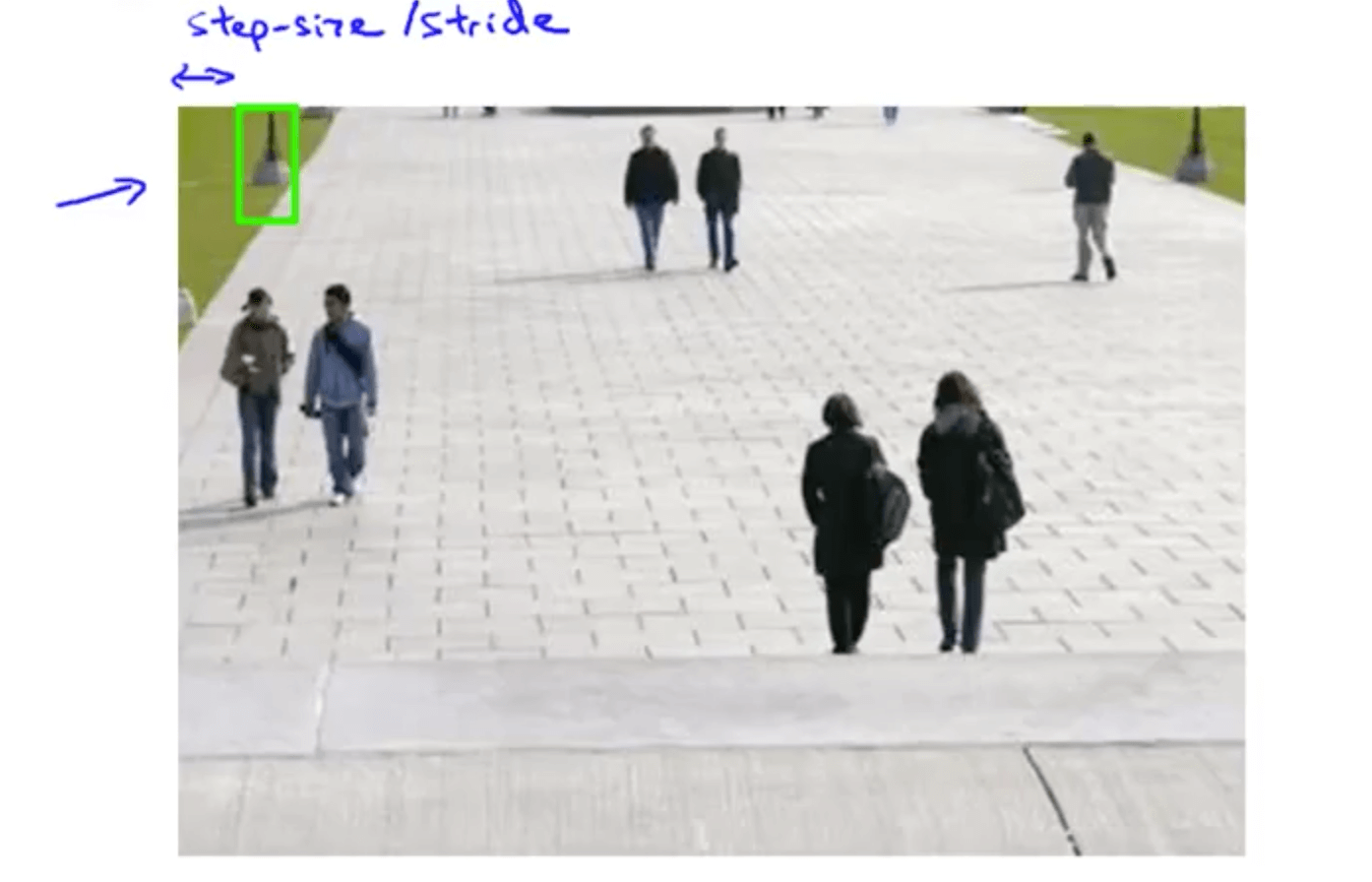
- Text detection
- Positive examples (y = 1), patches with text
- Negative examples (y = 0), patches without text
- Let us run a sliding window classifier on the image
- We have (on the bottom left) white areas that indicate text areas
- Bright white: classifier output a very high probability of text in the location
- If we take one more text by taking the output of the classifier and apply an expansion operator
- It takes the white region and expand them
- If we use heuristics and discard those with abnormal height-to-width ratio
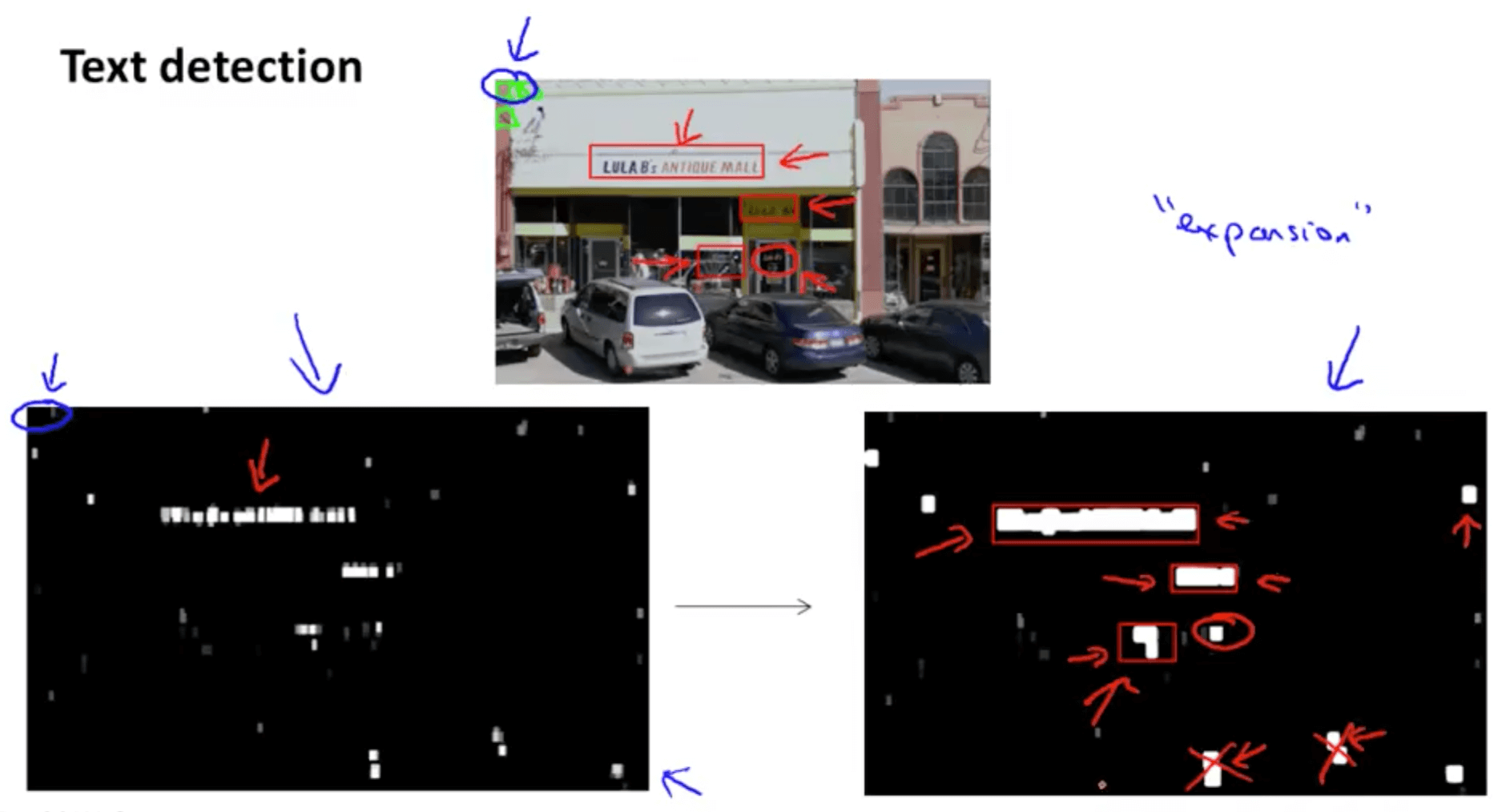
- Now we have the text
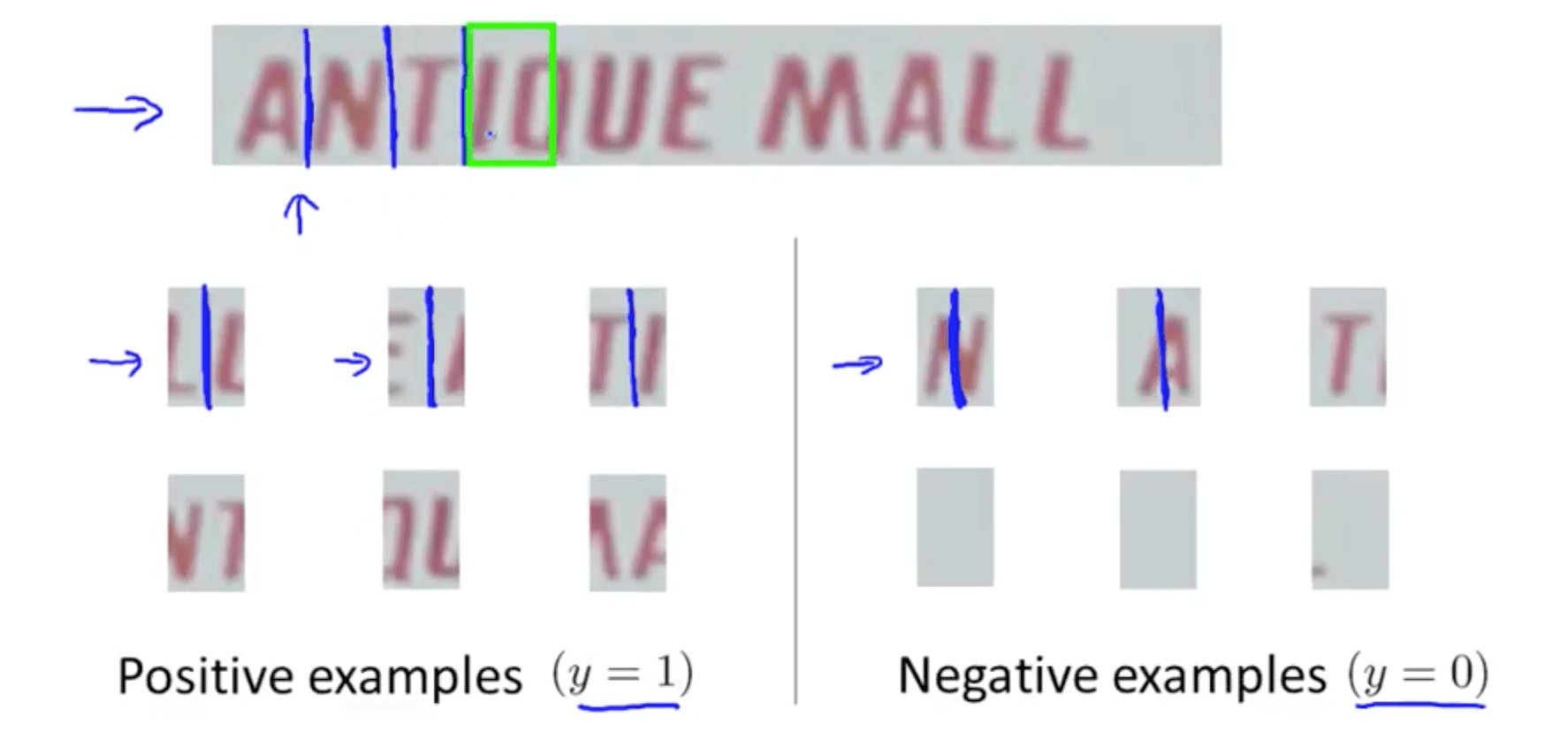
- We can start with the green rectangle and slide the window
- Should we put a split in the window?
- Train a NN to recognize the text
- We can start with the green rectangle and slide the window
- Photo OCR pipeline summary

Getting Lots of Data and Artificial Data
- Artificial data synthesis
- Creating data from scratch
- If we have a small training set, we turn that into a large training set
- Example of artificial data synthesis for photo OCR: Method 1 (new data)
- We can take free fonts, copy the alphabets and paste them on random backgrounds
- As you can see, the image on the right are synthesized
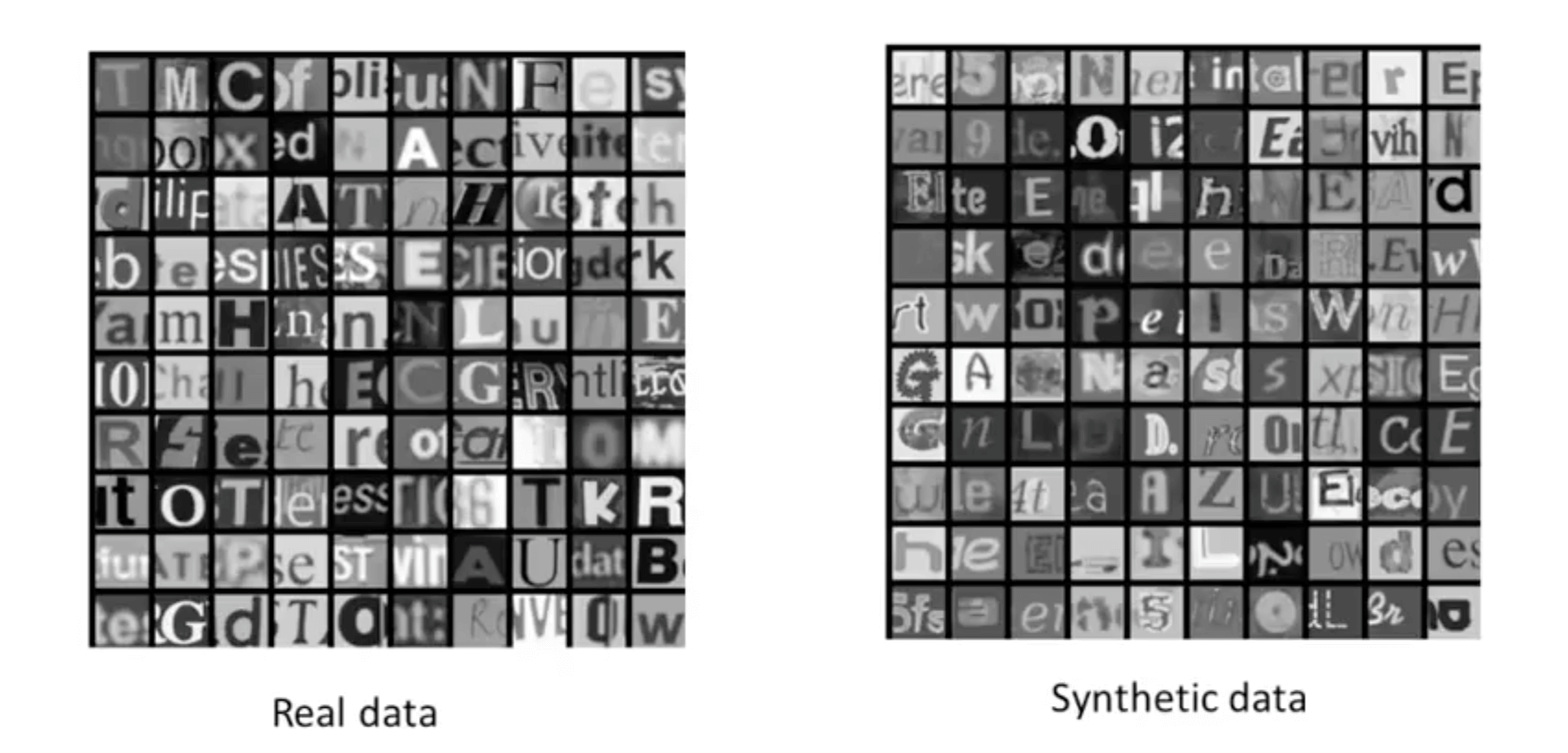
- Example of artificial data synthesis for photo OCR: Method 2 (distortion)
- We can distort existing examples to create new data
- In this case, the way to distort is through warping the image
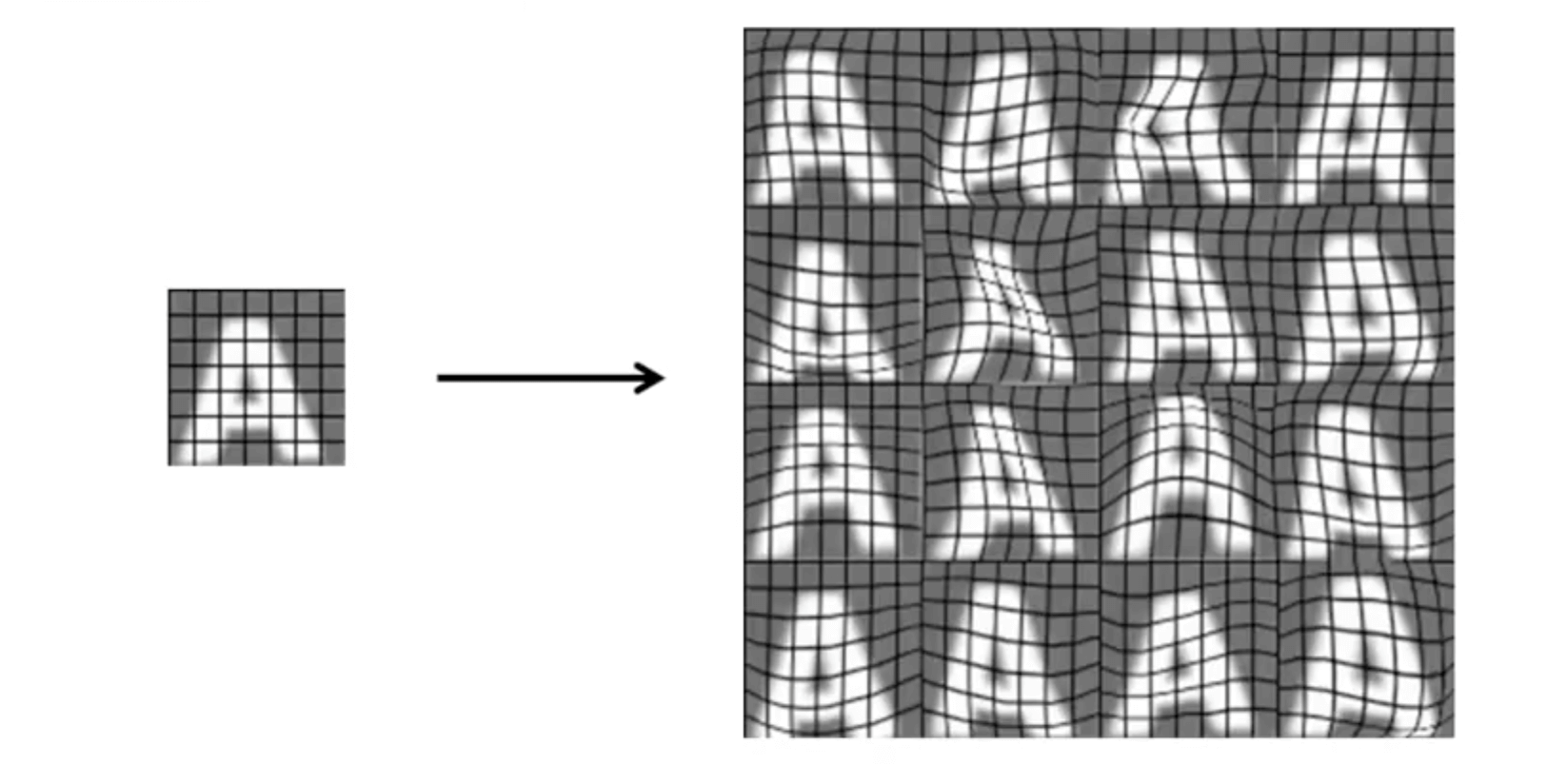
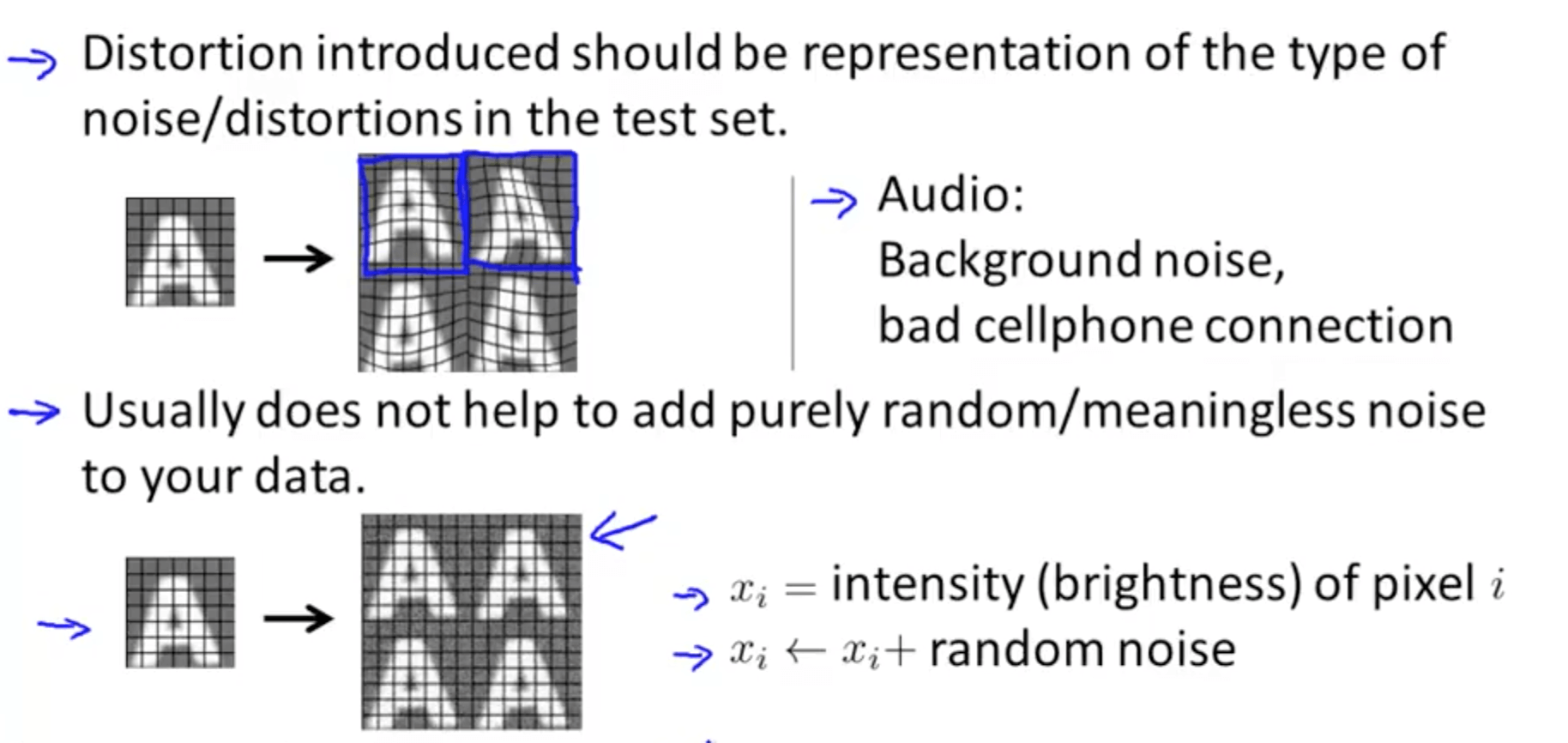
- Discussion on getting more data
- Make sure you have a low bias (high variance) classifier before expending the effort to get more data
- Plot the learning curves to find out
- Keep increasing the number of features or number of hidden units in the neural network until you have a low bias classifier
- How much work would it be to get 10x as much data as you currently have
- Artificial data synthesis
- Collect/label it yourself
- Crowd course
- Hire people on the web to label data (amazon mechanical turk)
- Make sure you have a low bias (high variance) classifier before expending the effort to get more data
Ceiling Analysis: What Part of the Pipeline to Work on Next
- Ceiling analysis
- When you have a team working on a pipeline machine learning system
- This gives you an indication on which part of the pipeline is worth working on
- When you have a team working on a pipeline machine learning system
- Ceiling analysis definition
- Estimating the errors due to each component
- Photo OCR example
- Choose any metric you would like
- Overall system
- Text detection
- By putting a check mark on “text detection”
- Going to go to the test set and give it the correct answers
- It’s as if you have a perfect text detection system
- Check the accuracy of the whole system (72% to 89%: 17% improvement)
- You run the algorithm and go to the next component in the pipeline
- You give it the correct “character segmentation”
- Check accuracy of the whole system (89% to 90%: 1% only)
- You run the algorithm mon the last component in the pipeline
- Check accuracy of the whole system (90% to 100%: 10%)
- This shows the upside potential from each component
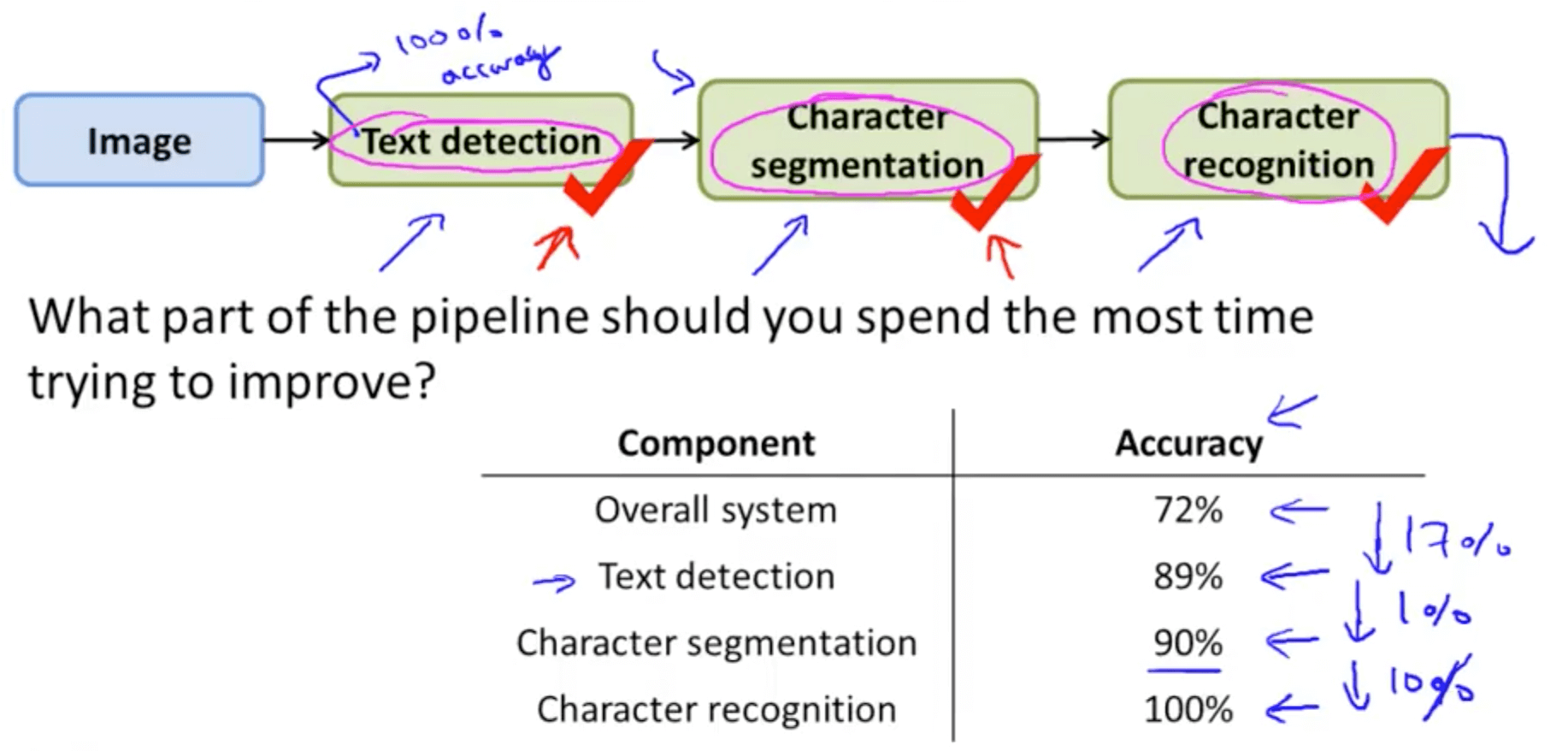
- Choose any metric you would like
- Another ceiling analysis example: face recognition from images
- Components most worthwhile
- Perfect face detection (5.9%)
- Perfect eye segmentation (4%)
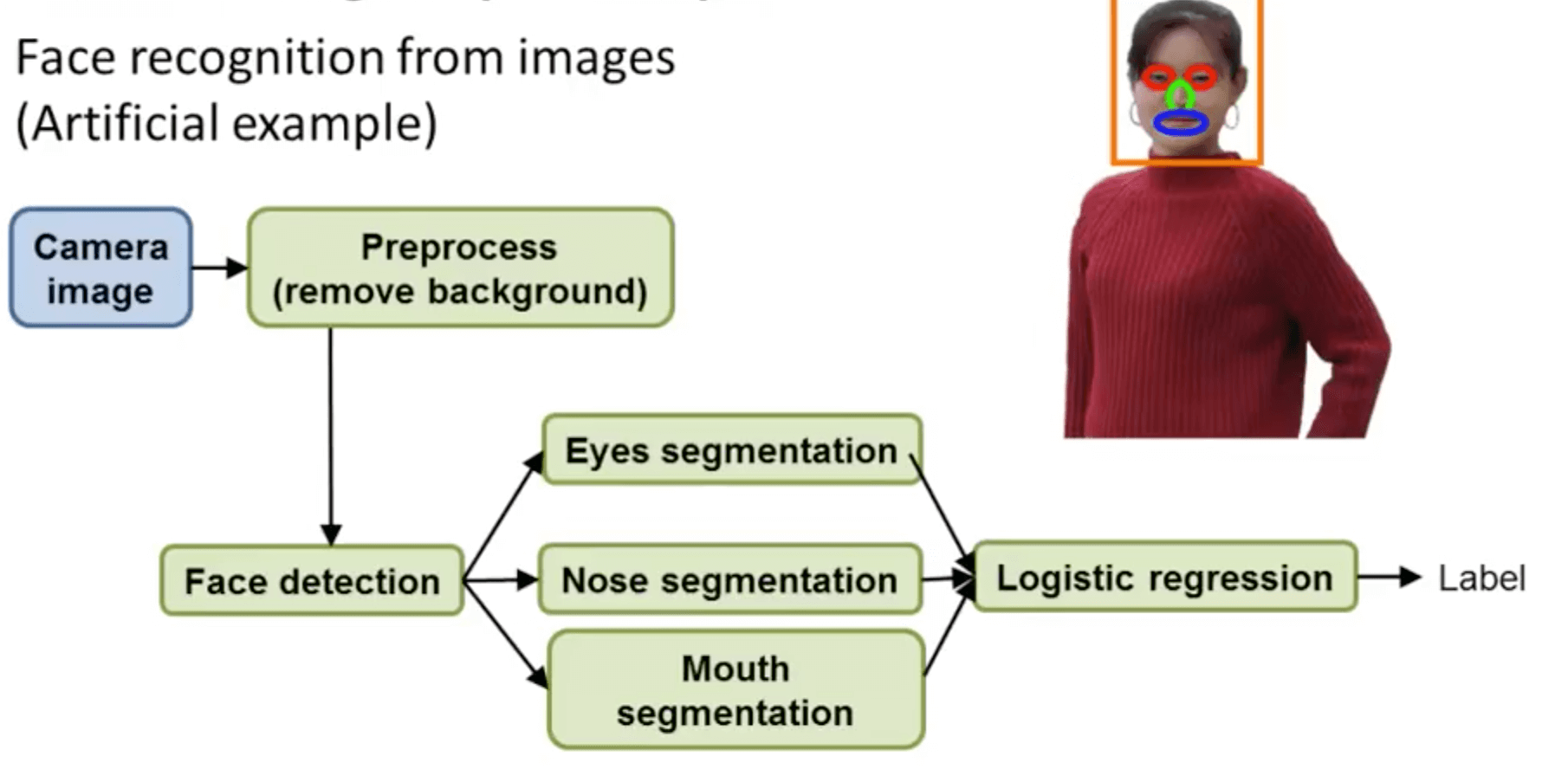
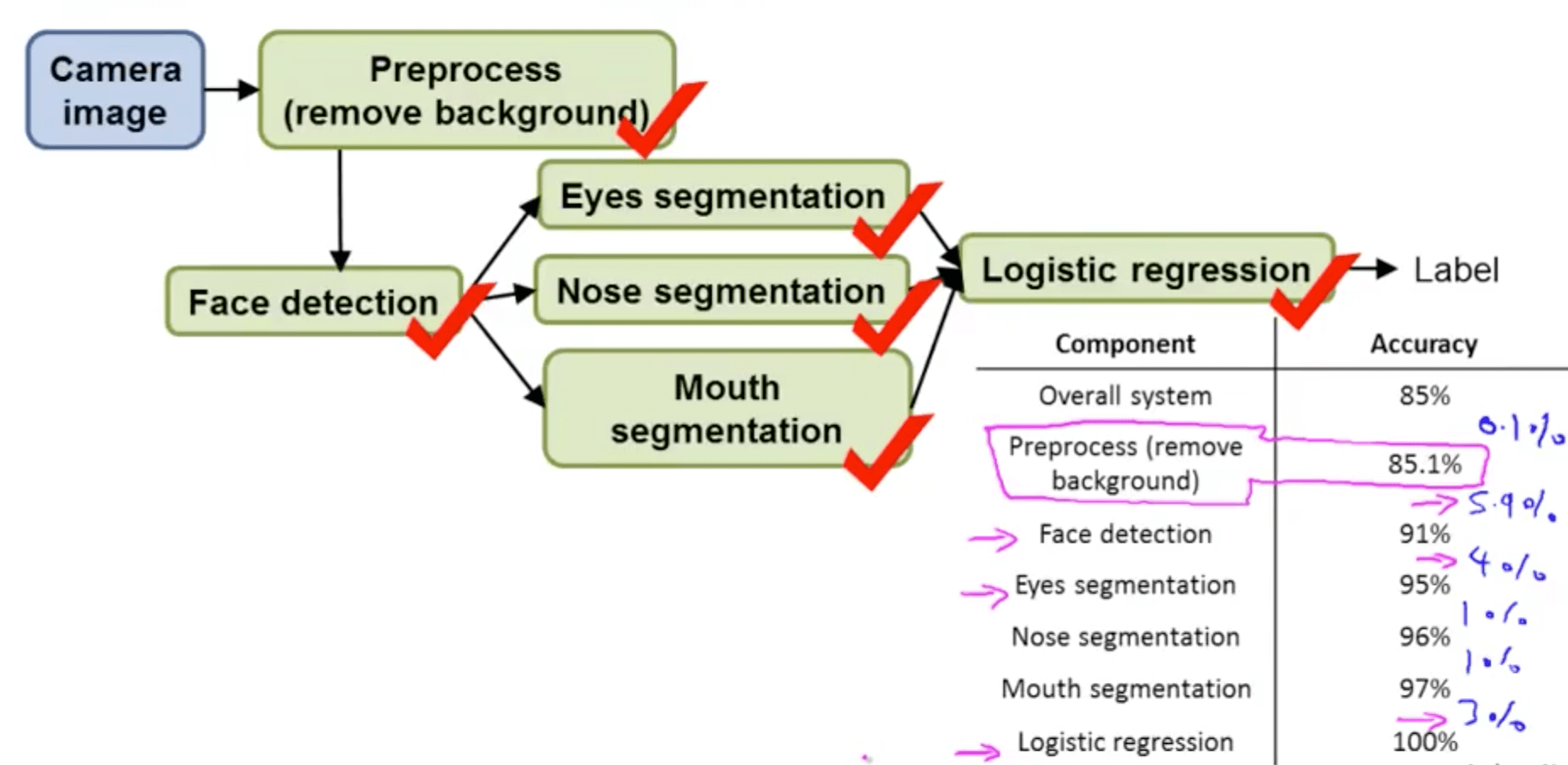
- Components most worthwhile
- Do not use your gut feeling
- Use ceiling analysis